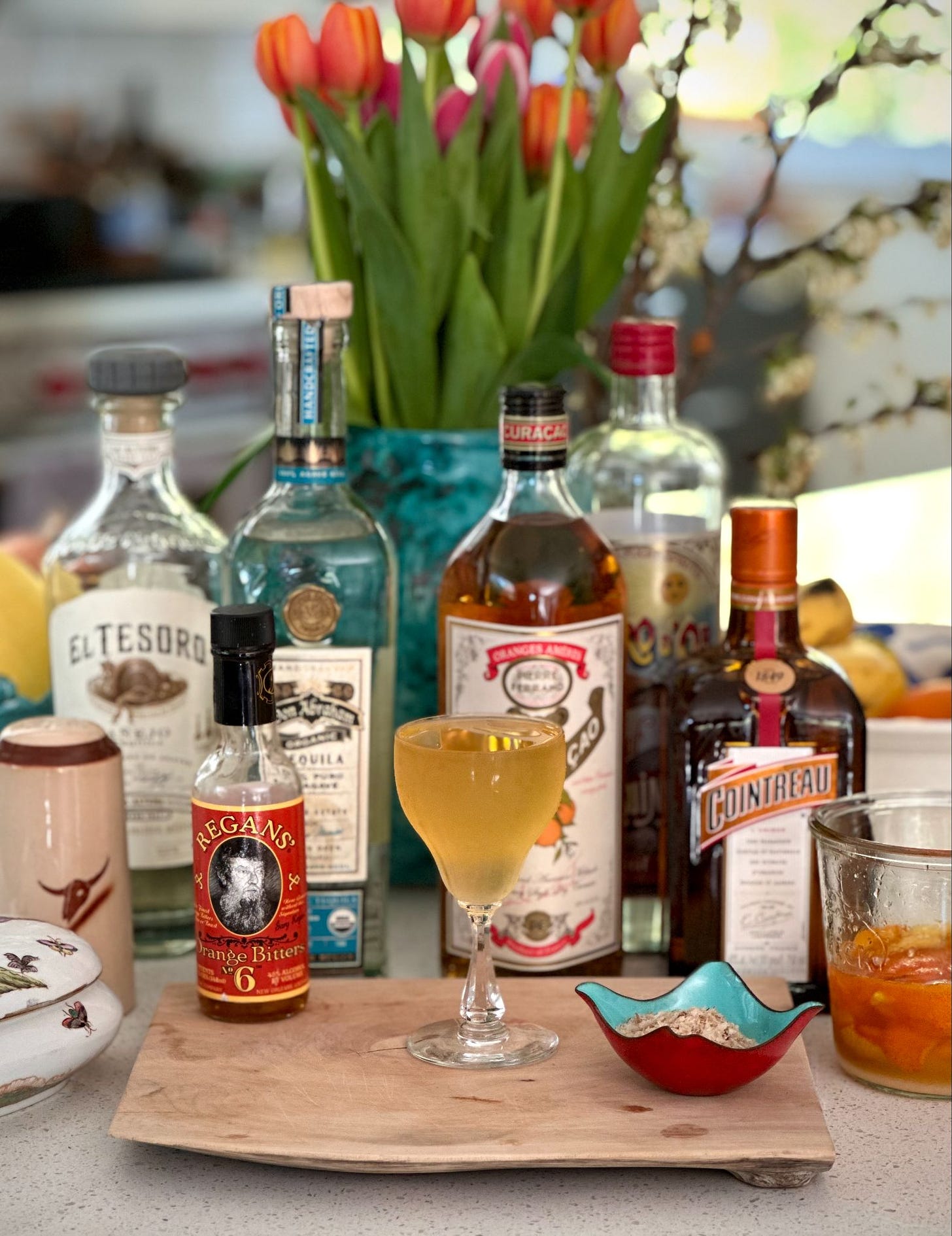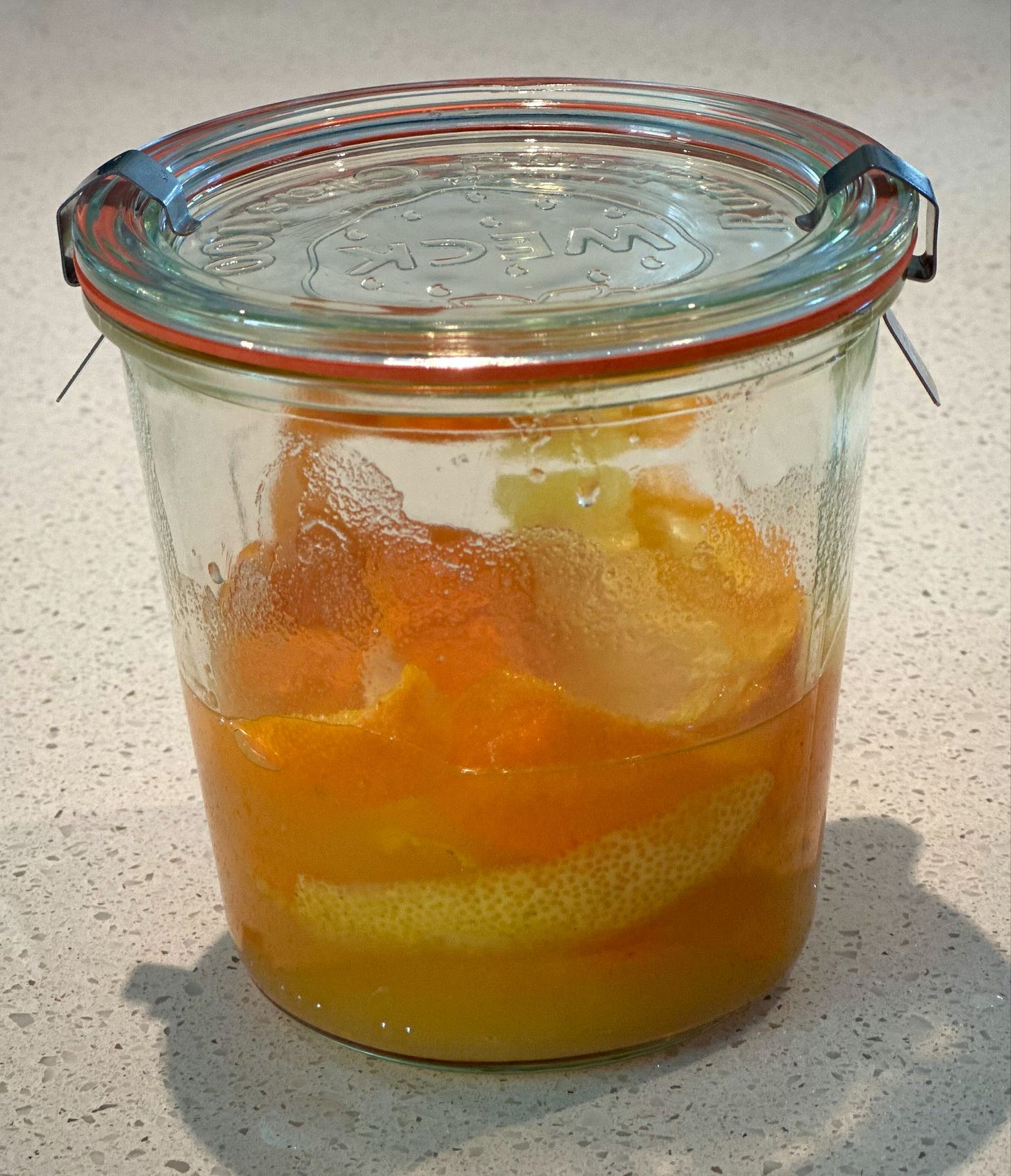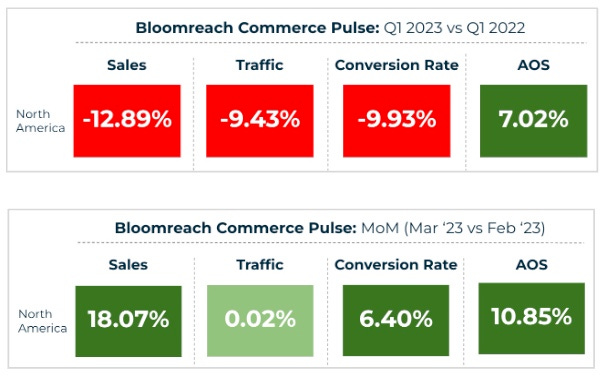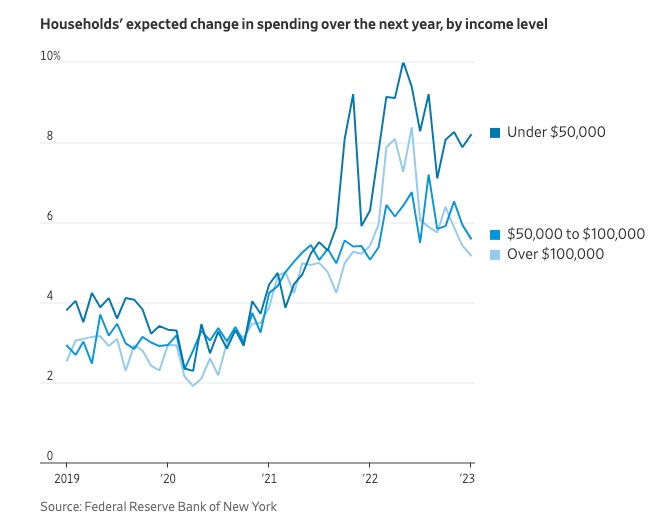In today’s issue, I focus on the state of E-commerce with a look at Bloomreach’s Q1 2023 Commerce Pulse results, and explore some underlying challenges in E-commerce we should focus on. I also help you prepare for Cinco de Mayo with an amazing margarita variation I created last year - the Kickback Cadillac! Enjoy!
This Week’s Cocktail: The Kickback Cadillac Margarita
My original plan for this issue’s cocktail was a Tequila gimlet - a refreshing, delightful spring cocktail that features one of Mexico’s many contributions to mixology. But does anything speak to Mexican and Mexican-American culture more than the margarita? I don’t think so. So I pivoted to a cocktail I created last year that is a delicious and arguably “high-concept” margarita that was created first out of necessity and then was refined.
The drink began last year when my family and I were visiting my brother-in-law and his family in Los Angeles. I held back that day while they went off to run errands and have fun, working by the pool -rough, I know! Late in the day I got a call that the family was heading back and wanted margaritas while we prepared the big dinner we had planned that night. I went foraging to gather limes that grow on the property with the goal of making a classic Tommy’s Margarita - a classic and easy to prepare margarita that calls for lime, agave syrup, and blanco tequila. It also happens to be a favorite of mine. But there was a problem, no limes. The trees were bare.
Not feeling like changing out of my swimsuit and running out to the store, I shifted gears and thought about how to recreate the tart, sweet balance of the agave syrup and lime from the abundance of fresh, ripe oranges and lemons I was able to find growing in the yard. The answer was oleo saccharum. Oleo-Saccharum is Latin for ‘oil-sugar’. And while it may sound complicated, it is actually an easy, old-world way of extracting citrus oils from peels. Many bakers may be familiar with it, and it also happens to be a key ingredient in old-world punch recipes, which is where I had first discovered its magic.
That afternoon, I picked fresh oranges and lemons and made an oleo saccharum, which took all of fifteen minutes. We also had on hand Cointreau, which my daughter’s boyfriend had bought because he loves to make classic Cadillac margaritas. And what is more L.A. than the Cadillac Margarita? Not much, depending on the origin story you believe.
Legend has it that the Cadillac Margarita was created at Wolfgang Puck’s acclaimed Spago restaurant on LA’s Sunset Strip. The story goes that the chef himself was shuttling duck sausage pizza from the kitchen as his servers were pushing the restaurant’s signature Margarita, mixed with a new high-end tequila, called Patrón, and Grand Marnier. Seated on one side of the room was Goldie Hawn and Kurt Russell, and on the other none other than Joan Collins. According to legend, Puck says, “Befitting its luxury, we call it the Cadillac Margarita.”
But the thing is - like much of mixology history - that’s just one of the origin stories for the codified version of the margarita that is a combination of high-end tequila with Grand Marnier subbed in for triple sec. Many others believe that the Cadillac Margarita we know today originated with the legendary Cadillac Bar in Nuevo Laredo, Mexico. When the bar opened a location across the border in San Antonio, Texas - way back in 1974 - it became a sensation. Regardless, today the Cadillac Margarita it's one of only two Margarita variants - the other being the aforementioned Tommy’s Margarita - to nudge its way into the modern cocktail canon.
Back in L.A. poolside, when they got back - a bit frazzled from a long day out and about in L.A. - I fixed my new variation of a Cadillac margarita. What we ended up with was delicious. And it was a fabulous and memorable evening.
Later last summer - back home in Seattle - it was time for the summer meeting of the Queen City Mixology Society. After considering a few ideas, I decided to feature the ‘Kickback’. Thankfully, we had a dinner party the weekend before the meeting where I had a built-in audience to enter my lab as I tweaked and tweaked my ideas to further dial it in. They were more than willing test subjects, though they seemed a bit mystified that I kept trying different ideas to get it where I wanted it.
You can see from the spec that I used both blanco and añejo tequila to add a bit of smokiness, but not too much. Instead of Gran Marnier, I blended Cointreau, Dry Curaçao, and Gran Classico from Switzerland's Tempus Fugit - which uses an "Italian Bitter of Turin" recipe from the 1860s - to get a rich, bitter orange flavor without being too sweet. Made by macerating twenty-five herbs and roots, including wormwood, gentian, rhubarb & hyssop, Gran Classico also adds an herbal note to its orange-peel bitter profile, helping to build depth in the cocktail. I also added a pinch of smoked sea salt which draws out the flavors and imparts a subtle fresh smoke profile. Also note that since this cocktail does not have actual juice, I stir it. That’s different than a typical margarita, but stirring gives it a mouthfeel and texture that is silky and more like what you expect from a boozy cocktail. It works!
The end result was awesome, and while there is no “winning” at QCMS meetings - only enjoyment and discussion of cocktails - the “Kickback” was a big hit. It is a margarita worthy of being on any boozy craft cocktail list - deep, balanced, & nuanced, but still clearly a margarita. And the name? ‘Kickback’ refers to both relaxing - erm, working! - by the pool, and also the kick this margarita has - it is boozy! It has a kickback!
In case you're wondering about the Mixology Society, QCMS is worthy of its own newsletter issue. Trust me, I promise I’ll write about that soon. From the inspiration from Basque ‘txokos’ I discovered in San Sebastián to our own fun and enriching traditions, I’ll dedicate some future edition to QCMS. So subscribe - you don’t want to miss it!
Kickback Cadillac spec, serves one:
1 oz - Añejo Tequila (or Reposado)
1 oz - Blanco Tequila
1/2 oz - Oleo Saccharum*
1/2 oz - Cointreau
1/4 oz - Gran Classico Bitter
1/4 oz - Dry Curaçao
Dash - Reagan’s Orange Bitters
Pinch - Smoked Sea Salt
The process:
Add ingredients to a beaker or pitcher and then add ice. Stir for 30 seconds and strain into a coupe glass or over ice in a rocks glass - which is a great way to cut the “booziness”.
Note: this is an easy cocktail to batch up and have ready when guests arrive. I mean, who makes just one margarita?
*How to make Oleo Saccharum:
Make sure you wash your citrus before starting, ideally choosing organic and unwaxed fruit if you can.
Peel the citrus with a vegetable peeling, trying to get as little pith as possible.
The basic rule of thumb is that you want to do about 2 oz of Sugar per fruit you are peeling.
To lengthen the Oleo Saccharum and dissolve any remaining sugar, add the same volume of fresh juice as you do sugar. (I like to use fresh orange juice for this drink, for its sweetness and “orangeness”.)
Place everything in a large jar and seal it. Shake until sugar is dissolved and ideally every few hours.
You can use it after three to four hours, but overnight is better. It will keep in the fridge for a few weeks, and you can preserve it a bit longer by adding a tablespoon of some high-proof neutral spirit, like vodka or moonshine.
Analysis: Q1 2023 E-Commerce Results
The first quarter of 2023 is more than in the books at this point, but the aggregated results from across the industry are just now rolling in. We are still waiting on the U.S. Census Bureau to release March and Q1 2023 retail and e-commerce results, but we do have some data already to look at.
This past week we held our Bloomreach Commerce Pulse webinar where we reported out the aggregated results from Bloomreach’s customer base. The webinar is free and is attended by nearly 1,000 customers, prospects, partners, and financial analysts who want to see the result we aggregate and report. The data-set we use includes ~1,00o sites operated by Bloomreach’s customers - many of whom are among the largest online retailers in the U.S., U.K. and Europe - so it is a meaningful data-set. Consider signing up for the next webinar in June, when I will be joined by the esteemed Rob Garf from Salesforce to discuss the numbers and forecast the upcoming holiday season.
In the U.S. & Canada it was a tough Q1, but with a solid recovery in March.
There is no way to sugar coat a result like sales down nearly thirteen percent. We have to reflect on three key factors here, principally that consumer confidence remains at a historic low.
While consumer confidence has rebounded from the all-time low reached in mid-2022, it remains historically very bad and saw a drop again in Q1. And while the U.S. economy in many ways is very healthy, Q1 saw layoff news and a banking crisis dominate the news cycle - naturally fueling anxiety amongst consumers.
What is especially interesting is that it is not only lower-income Americans concerned about the economy. The quadruple-whammy of higher interest rates, high-inflation, turbulent equities markets, and bank-runs has higher income Americans also now worried, impacting their spending. Only lower income households expect to spend over the rate of inflation, buoyed by high-employment, rising wages, and the increase in Social Security benefits that occurred this past year.
And inflation is clearly having an impact on consumers' real income.
In the first half of 2022, real personal income experienced a sharp decline due to the impact of inflation. Despite some gains in wages, the persistence of inflation through 2023 has taken a toll on “real income” as measured by PCE - Personal Consumption Expenditures (PCE) inflation- a measure of the average change over time in the prices paid by consumers for goods and services that is calculated by the Bureau of Economic Analysis (BEA) and is considered by the Federal Reserve to be one of the key indicators of how inflation in the US economy is impacting cost of living for U.S. consumers.
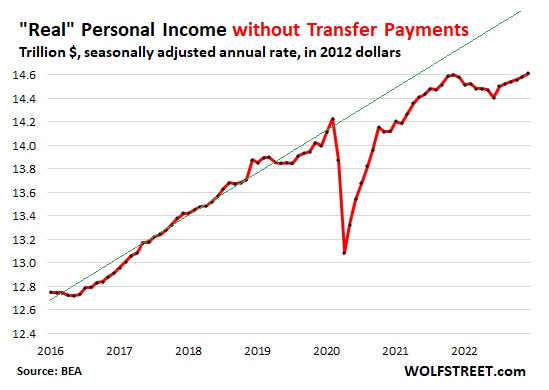
PCE is now markedly deviating from the pre-pandemic trend-line. Although there has been some improvement in real personal income excluding increases to Social Security benefits, real income has actually fallen further behind pre-pandemic levels. It appears that the inflation is being felt by someone, as its effects are being seen in the decline of real personal income.
Another interesting look at consumer sentiment and how that translates to spending is by asking them. Most consumers are planning on spending less.
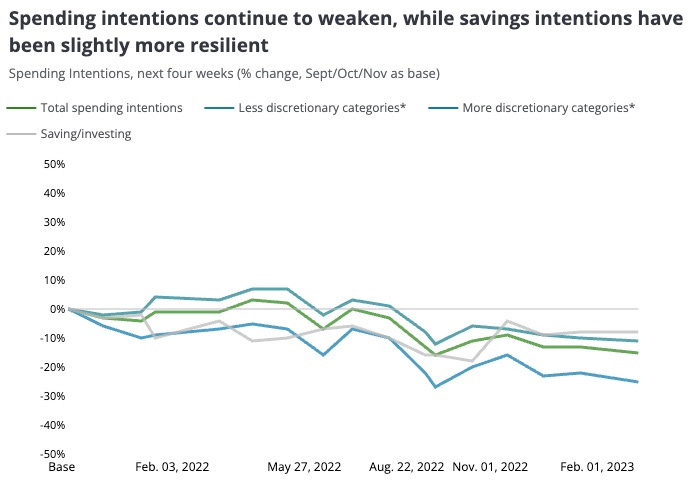
And what spending is happening is directed differently - focused on travel, dining-out, and experiences - though is starting to taper off.
Let’s face it, the pandemic for most people is more than over and many consumers are back to busy social lives and lots of travel, dining out, and a focus on experiences - such as concerts and sporting events. This is also having an impact on retail spending and of course how much of that is happening online. During the pandemic consumers focused on goods for their homes and padded their savings, but now spending is back in full force, just focused more on services and dipping into American’s savings.
Adding the this dynamic was the fact that many retailers and brands exited last holiday season with aged inventories and lots of clearance to work through as the stalled supply-chains of the pandemic eased up and many retailers found themselves over-inventoried in categories that were pandemic winners. Consumers were not tempted, and held out. As stocks refreshed later in Q1 consumers began to respond, leading to a solid recovery from the depths of February in the U.S..
Given the knock-on effects of what consumers already bought during the pandemic, the focus on travel and services, and the challenges of inflation it is almost surprising the results are not worse.
But the problems we see in Q1 results point to something else as well - the customer experience is not where it needs to be.
By many measures, customers are less engaged and more frustrated than they have been in a long while. As an industry we have failed to keep up with the transition to mobile and to make the user experience as it needs to be. Key metrics like session depth, time spent on sites, and the scroll rate have fallen. This is impacting conversion rate. I came across Contentsquare’s recent benchmark data, which helps to illuminate the point.
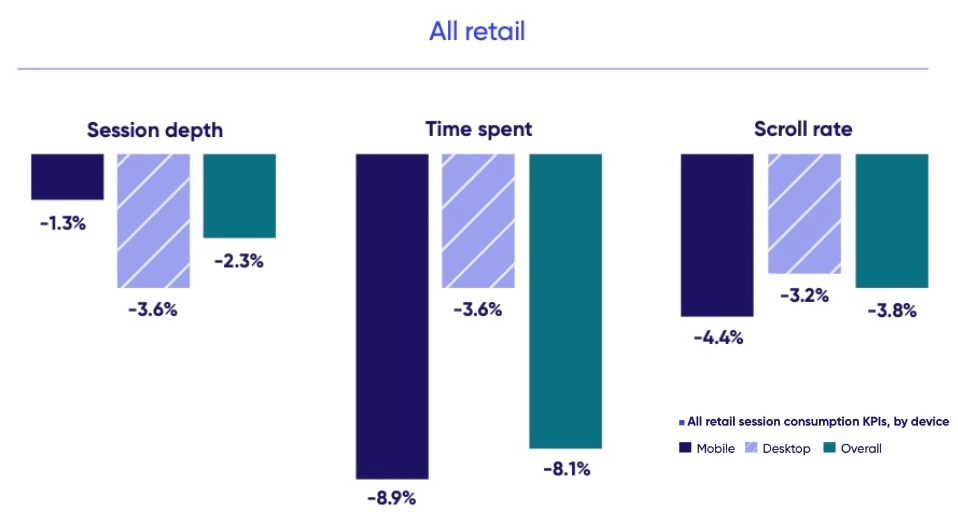
One reason for that is the fact that mobile is now at least as important as desktop across many industry segments - or for a few is by far the most important. That most typically means shopping via the browser on your mobile phone, which remains a more frustrating experience than it should be.
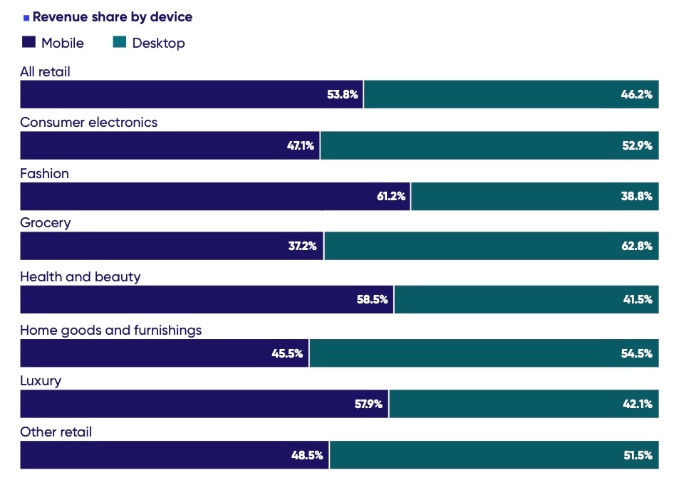
The great thing about serving customer digitally is the ability to observe why customers are frustrated. Contentsquare, Quantum Metric, and other companies are now helping online businesses better understand what is happening on their sites, and why customers are frustrated. Slow page load times - often due to less than optimal commerce and content technology and infrastructure - are a key reason. Unresponsive or slow online applications are another reason, leading to a aptly named metric called a “rage click” - when we click repeatedly on the same button or link and it does not respond as we expect. These frustrating experiences are - perhaps surprisingly - on the rise.
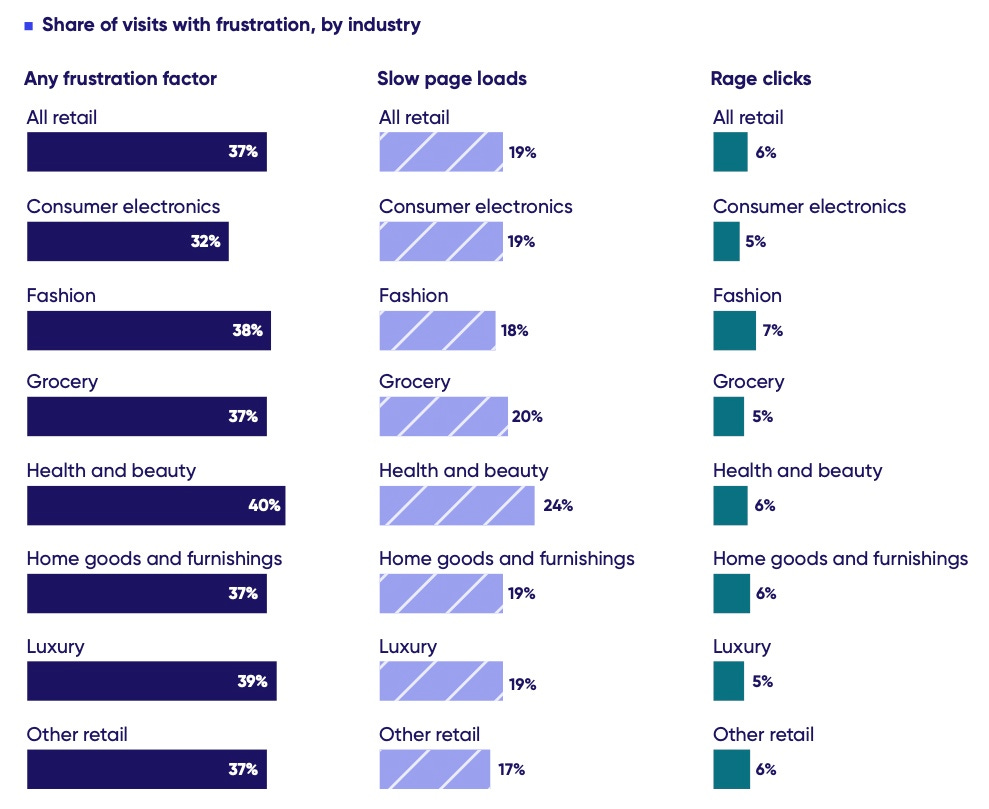
This all points to businesses needing to seriously look at how they are serving customers, the user-experience design -especially on mobile, and look to ensure their investments in their digital business technology are where they need to be to serve customers and drive profitable relationships. Nearly a third of traffic toi commerce websites is coming from paid sources, perhaps it would be wise to take some of that spending and ensure the user experience is where it needs to be to serve your existing customers more effectively.
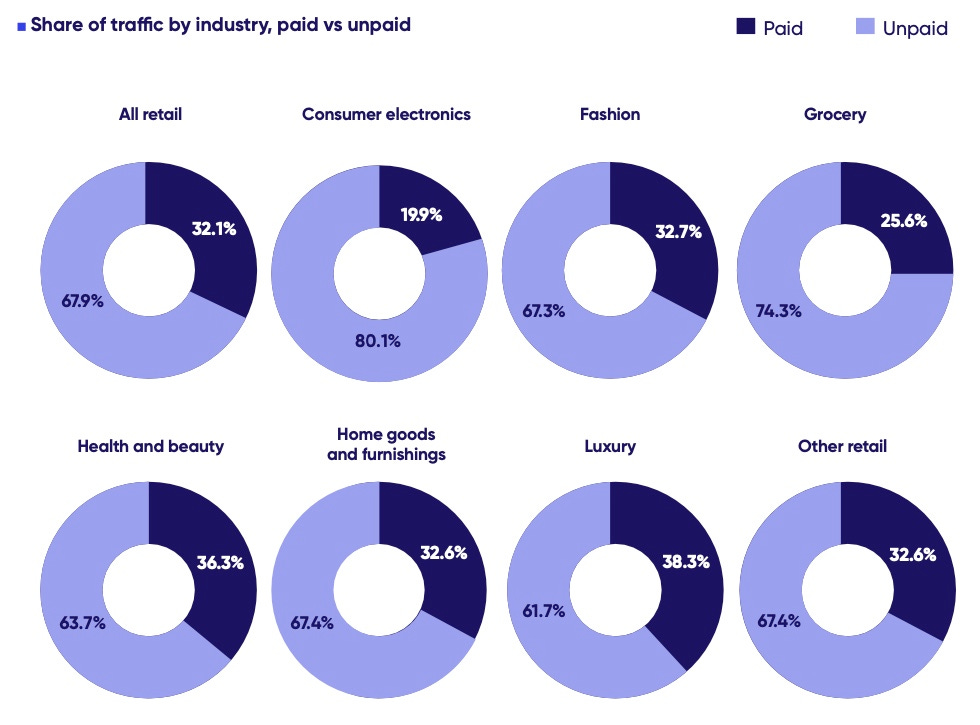
Note: There is a lot more that Bloomreach covers with Commerce Pulse, including industry segment data across Apparel, Luxury, Grocery, General Merchandise, Home, and B2B. Bloomreach Commerce Pulse also covers U.K & European results, check out the recording of Commerce Pulse on Bloomreach.com to explore those numbers and what we can learn from them.
Join me and meet at these upcoming events:
MACH 2 - Amsterdam - June 13-14, 2023 - Talking composable commerce and composable cocktails in one of my favorite cities in the world. Plus you can count on finding me at Pulitzer’s Bar at least once while I am there.
Commerce Next E-Commerce Growth Show - NYC - JUNE 20-21, 2023 NYC - From Amsterdam to New Amsterdam, talking about digital commerce growth. I’ll be speaking about driving customer engagement across all channels through personalized SMS marketing.
Thank you for reading Cocktails, Commerce & Conversion. If you think others would benefit from the cocktail or the analysis (or both!) - please share. I very much appreciate it. - Brian
If you are looking for me online, you can find me here, here, and here.
Be well, be safe, and here is to good business! Cheers! - Brian




